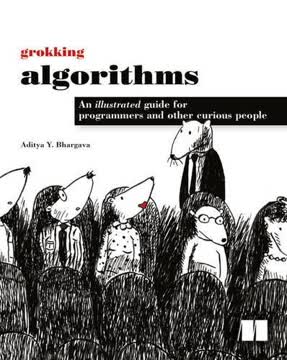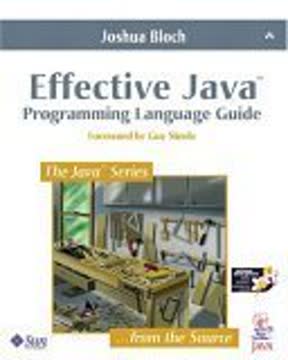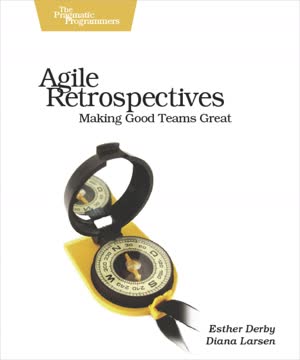Key Takeaways
1. Retrospectives are essential for continuous team improvement and adaptation
Retrospectives enable whole-team learning, act as catalysts for change, and generate action.
Continuous improvement. Retrospectives provide a structured opportunity for teams to reflect on their work, processes, and interactions. By regularly examining what went well and what could be improved, teams can adapt their methods, address issues, and enhance their performance. This iterative approach to improvement helps teams stay agile and responsive to changing project demands.
Tangible benefits. Teams that consistently hold retrospectives often see:
- Improved productivity through better practices
- Enhanced capabilities as team members share knowledge
- Higher quality output by addressing recurring issues
- Increased capacity by focusing on high-value work
Cultural impact. Beyond measurable improvements, retrospectives foster a culture of openness, trust, and shared responsibility. They encourage team members to voice concerns, share ideas, and collaborate on solutions, leading to higher job satisfaction and team cohesion.
2. A structured approach ensures effective retrospectives
Set the stage, Gather data, Generate insights, Decide what to do, Close the retrospective.
Five-phase structure. This framework provides a logical flow for retrospectives, ensuring that teams cover all necessary aspects:
- Set the stage: Create a focused, safe environment for open discussion
- Gather data: Collect facts and feelings about the work period
- Generate insights: Analyze the data to uncover patterns and root causes
- Decide what to do: Choose actions and experiments for improvement
- Close the retrospective: Reinforce learnings and commitments
Flexible application. This structure can be adapted to fit various timeframes, from hour-long iteration retrospectives to multi-day project reviews. The key is maintaining the logical progression through each phase, allowing teams to move from reflection to action effectively.
Consistent outcomes. By following this structure, teams are more likely to achieve meaningful results from their retrospectives, avoiding common pitfalls such as unfocused discussions or failure to generate actionable outcomes.
3. Gathering diverse data creates a shared understanding
Without data, the team is speculating on what changes and improvements to make.
Comprehensive data collection. Effective retrospectives gather both objective and subjective data:
- Hard data: Events, metrics, completed work items
- Soft data: Feelings, perceptions, team dynamics
Visualization techniques. Tools like timelines, satisfaction histograms, and team radars help teams visualize data, making it easier to identify patterns and trends. These visual representations often reveal insights that might be missed in simple discussions.
Diverse perspectives. Gathering data from all team members ensures a complete picture of the work period. This inclusive approach helps surface different viewpoints and experiences, leading to more comprehensive insights and solutions.
4. Generating insights transforms data into actionable knowledge
Generating insights allows the team to step back, see the big picture, and delve into root causes.
Analytical activities. Techniques such as brainstorming, fishbone diagrams, and Five Whys help teams move beyond surface-level observations to uncover underlying causes and patterns. These activities encourage creative thinking and help teams see connections between different data points.
Collaborative exploration. By working together to analyze data, teams develop a shared understanding of their challenges and opportunities. This collective insight-generation process often leads to more innovative and effective solutions than individual analysis.
Focus on root causes. Identifying root causes, rather than just symptoms, allows teams to address fundamental issues that may be affecting multiple aspects of their work. This approach leads to more impactful and lasting improvements.
5. Deciding what to do turns insights into concrete improvements
Deciding What to Do moves the team's focus to the next iteration.
Prioritization. Teams should focus on a limited number of high-impact improvements to avoid overwhelming themselves. Techniques like dot voting can help teams prioritize potential actions based on their perceived value and feasibility.
SMART goals. Effective improvement actions should be Specific, Measurable, Achievable, Relevant, and Time-bound. This framework ensures that chosen actions are concrete and have a clear path to implementation.
Ownership and commitment. Assigning clear ownership for each action item and setting specific timelines increases the likelihood of follow-through. Teams should also consider how to measure the success of their chosen improvements.
6. Closing the retrospective reinforces learning and commitment
Closing the retrospective provides moments for continuous improvement, for reflecting on what happened during the retrospective, and for expressing appreciation.
Reflection on the process. Activities like +/Delta allow teams to evaluate and improve their retrospective process itself, ensuring that these sessions remain effective over time.
Appreciation. Ending with appreciations helps reinforce positive behaviors and contributions, boosting team morale and strengthening relationships.
Clear next steps. Summarizing action items, owners, and timelines ensures that everyone leaves with a clear understanding of commitments and expectations.
7. Effective facilitation is key to successful retrospectives
As a retrospective facilitator you may follow the content, but your primary responsibility is the process.
Neutral leadership. The facilitator should remain impartial, focusing on guiding the process rather than contributing content. This neutrality helps ensure all voices are heard and that the team reaches its own conclusions.
Managing dynamics. Skilled facilitators:
- Encourage equal participation
- Handle difficult behaviors or emotions
- Keep discussions on track and time-boxed
- Adapt activities to the team's needs and energy levels
Continuous improvement. Facilitators should seek feedback on their performance and continuously work to improve their skills in areas such as activity management, group dynamics, and time management.
8. Release and project retrospectives offer broader organizational insights
Release and project retrospectives bring together people who must coordinate their work to achieve a goal—deploying software—but may have very different points of view, different missions, and different measures.
Cross-functional perspective. Including participants from various departments provides a more comprehensive view of the project or release, highlighting interdependencies and systemic issues.
Organizational learning. These broader retrospectives offer opportunities to identify and address organizational policies, procedures, or practices that may be hindering project success across multiple teams.
Longer-term focus. While iteration retrospectives focus on immediate team improvements, release and project retrospectives allow for examination of longer-term trends and strategic improvements.
9. Tailoring activities enhances retrospective engagement and outcomes
Choose activities that support the goal of the retrospective.
Activity selection criteria:
- Relevance to the retrospective goal
- Team size and composition
- Available time
- Team's familiarity with retrospectives
Variety maintains engagement. Rotating through different activities for each phase of the retrospective helps maintain team interest and can uncover new insights.
Adaptation for context. Activities can be modified to fit specific team needs or to address particular challenges. For example, using color-coding in a timeline activity to highlight different types of events or emotions.
Last updated:
FAQ
What's "Agile Retrospectives: Making Good Teams Great" about?
- Focus on Retrospectives: The book is centered around the concept of retrospectives, which are meetings where teams reflect on their work to improve processes and teamwork.
- Agile Methodology: It specifically addresses retrospectives within the context of Agile methodologies, helping teams to inspect and adapt their practices.
- Structured Approach: The authors provide a structured approach to conducting retrospectives, including setting the stage, gathering data, generating insights, deciding what to do, and closing the retrospective.
- Practical Guidance: It offers practical advice, activities, and examples to help teams conduct effective retrospectives and drive continuous improvement.
Why should I read "Agile Retrospectives: Making Good Teams Great"?
- Improve Team Performance: The book provides tools and techniques to help teams improve their performance and work more effectively together.
- Enhance Agile Practices: It is particularly useful for teams practicing Agile methodologies, offering insights into how retrospectives can enhance Agile practices.
- Comprehensive Resource: With detailed activities and examples, it serves as a comprehensive resource for anyone looking to facilitate retrospectives.
- Expert Authors: Written by experienced facilitators Esther Derby and Diana Larsen, the book distills years of experience into actionable advice.
What are the key takeaways of "Agile Retrospectives: Making Good Teams Great"?
- Structured Retrospectives: A structured approach to retrospectives can lead to meaningful insights and improvements.
- Team Involvement: Successful retrospectives require the involvement and buy-in of the entire team, fostering a culture of continuous improvement.
- Variety of Activities: Using a variety of activities keeps retrospectives fresh and engaging, preventing them from becoming routine.
- Focus on Action: Retrospectives should result in actionable plans that the team can implement in the next iteration.
How do the authors suggest setting the stage for a retrospective?
- Welcome and Purpose: Begin with a welcome and clearly state the purpose and goals of the retrospective.
- Participation Encouragement: Encourage everyone to speak early on to ensure full participation throughout the session.
- Working Agreements: Establish or review working agreements to create a safe and productive environment for discussion.
- Focus on Constructive Communication: Use activities like "Focus On/Focus Off" to promote constructive communication and avoid blame.
What activities are recommended for gathering data during a retrospective?
- Timeline Creation: Use a timeline to visually represent events and milestones, helping the team recall what happened during the iteration.
- Color Code Dots: Apply color-coded dots to the timeline to indicate emotional highs and lows, providing insight into team morale.
- Mad Sad Glad: This activity helps team members express their feelings about the iteration, uncovering emotional data that might otherwise be missed.
- Satisfaction Histogram: Gauge team satisfaction with various aspects of the iteration to identify areas for improvement.
How can teams generate insights from the data gathered in a retrospective?
- Five Whys: Use the "Five Whys" technique to delve deeper into the root causes of issues, moving beyond surface-level symptoms.
- Fishbone Diagram: Create a fishbone diagram to visually map out potential causes of problems, facilitating a deeper analysis.
- Patterns and Shifts: Identify patterns and shifts in the data to understand how events and behaviors contributed to the current situation.
- Brainstorming/Filtering: Generate a wide range of ideas and then filter them against specific criteria to find the most relevant insights.
What steps do the authors recommend for deciding what to do after generating insights?
- Prioritize with Dots: Use dot voting to prioritize the most important issues or ideas that the team should focus on.
- SMART Goals: Develop SMART (Specific, Measurable, Achievable, Relevant, Timely) goals to ensure that action plans are clear and actionable.
- Retrospective Planning Game: Break down action items into specific tasks and assign ownership to ensure accountability and follow-through.
- Circle of Questions: Engage the team in a structured question-and-answer process to reach consensus on next steps.
What are some activities for closing a retrospective effectively?
- +/Delta: Use the +/Delta activity to gather feedback on what went well and what could be improved in the retrospective process itself.
- Appreciations: Allow team members to express appreciation for each other's contributions, ending the session on a positive note.
- Temperature Reading: Conduct a temperature reading to gauge the team's overall feelings and readiness to move forward.
- Return on Time Invested (ROTI): Evaluate the effectiveness of the retrospective by asking team members to rate the return on their time invested.
How do release and project retrospectives differ from iteration retrospectives?
- Broader Scope: Release and project retrospectives involve a wider range of participants from across the organization, not just the core team.
- Cross-Organizational Issues: They focus on cross-organizational issues and system problems that may not be addressed in iteration retrospectives.
- Longer Duration: These retrospectives are typically longer, allowing for more in-depth analysis and discussion.
- Organizational Learning: They provide an opportunity for organizational learning and improvement beyond the immediate team.
What are some best practices for facilitating retrospectives?
- Neutral Facilitation: The facilitator should remain neutral, focusing on the process rather than the content of the discussion.
- Manage Dynamics: Pay attention to group dynamics, ensuring that all voices are heard and managing any disruptive behavior.
- Time Management: Keep the retrospective within the timebox, balancing the need for thorough discussion with the need to stay on schedule.
- Continuous Improvement: Use feedback from each retrospective to improve the facilitation process and make future sessions more effective.
What are the best quotes from "Agile Retrospectives: Making Good Teams Great" and what do they mean?
- "Retrospectives help teams—even great ones—keep improving." This emphasizes the importance of retrospectives for continuous improvement, regardless of a team's current performance level.
- "The most powerful place to start change is within the team." This highlights the team's ability to drive change and improvement from within, rather than relying on external forces.
- "Retrospectives are a natural fit in an Agile work environment." This underscores how retrospectives align with Agile principles of inspection and adaptation.
- "Action begets action." This quote encourages teams to take even small steps toward improvement, as action leads to further action and progress.
How can teams ensure that changes identified in retrospectives are implemented effectively?
- Support and Reinforcement: Provide support and reinforcement for new behaviors, acknowledging progress and encouraging continued effort.
- Shared Responsibility: Ensure that responsibility for action items is shared among team members to prevent reliance on a single individual.
- Temporary Structures: Use temporary structures to help the team transition from old ways to new practices, providing stability during change.
- Monitor Progress: Regularly check in on the progress of action items and adjust plans as needed to ensure successful implementation.
Review Summary
Agile Retrospectives receives mostly positive reviews, praised for its practical guidance on running effective team retrospectives. Readers appreciate the variety of activities and techniques provided for each stage of the retrospective process. The book is seen as valuable for both new and experienced Scrum Masters. Some criticisms include its focus on in-person meetings and lack of adaptation for remote teams. Overall, it's considered a useful resource for improving team dynamics and fostering continuous improvement in agile environments.
Similar Books










Download PDF
Download EPUB
.epub digital book format is ideal for reading ebooks on phones, tablets, and e-readers.




